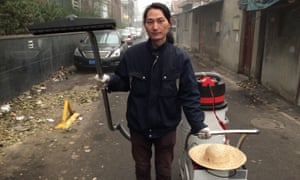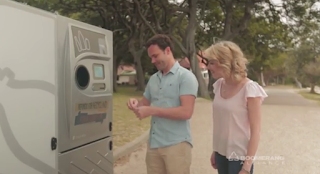Chai Jing, who resigned from her position as a prominent news anchor at China's state-owned CCTV after the birth of her daughter. After she became a mother, she realises the impact of the air quality to her baby and all the people who are living in Beijing. She combines research, data visualization, investigative reporting and her own personal experiences to the issues of smog. Jing states that she will not take her daughter out when the air quality is bad in Beijing, which in 2014 was nearly half of the days of year.
This video spread out quickly on the social media and draws a lot of attention, but after several months people started to forget about it.
The video mentions something that most of us would probably comes to mind when we talk about air pollution : industrial factories, car, the lifestyle of the people. The sadly facts is we all knows about it but who really cares and take actions on it. I personally don't think it is the responsibility solely on the government. But every single one of us who are living on earth. It is our values and lifestyle which caused the problems.

A photo taken in Beijing which show the dense smog in the city of Beijing
The Columbia University and Chongqing Medical University's study shows a clear connection between children conceived and raised near a Chinese coal-fired power plant and reduced neurological development when assessed at age two because of the particulate matter, carbon dioxide, sulphur dioxide, and heavy metals. The particles are really small that it could enter our body directly.

Wang Renzheng, a Chinese performance artist better known as Nut Brother, with the industrial vacuum cleaner he uses to suck up smog.
The artist, Wang Renzheng has used the extracted dust from the city’s atmosphere and transformed them into a dark brown “smog brick”. I am interested in whether this concept can be applied in the future as the pollutants can be collected and turned into a building materials that probably can reduced the pollution. However, the dust collecting progress is slow and not cost effective. Therefore, it is a solution not for now. But I think what he is trying to do is meaningful as it shows how much pollutants we breathe in everyday and we are responsible to clean our city. Hopefully in the future, there are ways that can really turn the pollution to something useful. And we can develop a healthier lifestyle with less cars, less waste and less pollution.
Reference:
Grassheling. "Chai Jing's Review: Under the Dome – Investigating China's Smog." YouTube. 2015. Accessed May 26, 2016. https://www.youtube.com/watch?v=T6X2uwlQGQM.
"New China Study Reveals a Link between Air Pollution and Brain Development in Babies." TreeHugger. Accessed May 26, 2016. http://www.treehugger.com/health/new-china-study-reveals-link-between-air-pollution-and-genetic-mutation-babies.html
Phillips, Tom. "China's Vacuum-cleaner Artist Turning Beijing's Smog into Bricks." The Guardian. 2015. Accessed May 26, 2016. http://www.theguardian.com/world/2015/dec/01/chinese-vacuum-cleaner-artist-turning-beijings-smog-into-bricks.







